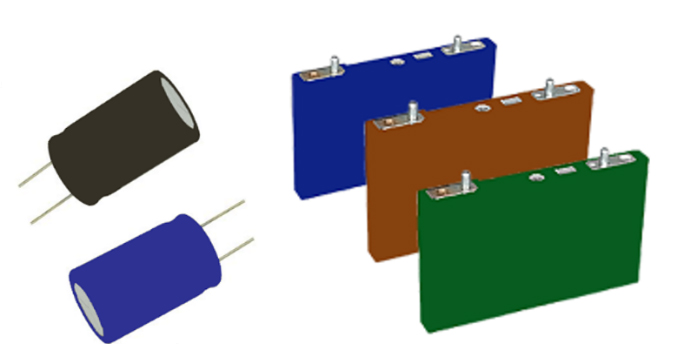
Project Overview
Duration: 2019 onwards
This research stream is being conducted as part of the activities of the ANU Battery Lab.
Contact: Dr Alexey Glushenkov, Research Leader, Battery Storage and Grid Integration Program, ANU. Email: alexey.glushenkov@anu.edu.au
The accelerating use of renewable energy resources, electric vehicles and portable electronic devices has caused our society to require greater amounts of energy storage. Currently lithium-ion batteries account for the majority of this storage. However batteries perform poorly when large currents need to be produced. For applications requiring high power, such as emergency doors, regenerative breaking and specialised uninterruptible power supplies, different energy storage cells called electrochemical supercapacitors are often used. While these devices are able to charge and discharge exceptionally quickly, they unfortunately have low energy densities. This introduces a natural limitation for the technology of electrochemical supercapacitors, as a large number of cells would be required for any situation that needs both high power density and high energy density.
Recently a new type of device known as a hybrid capacitor has emerged with performance characteristics superior to electrochemical supercapacitors. The most well-known example of hybrid capacitors is the lithium-ion capacitor (LIC), a commercialised electrochemical cell available in the market since 2011. The simultaneously attractive energy densities (5-15 Wh/kg in packaged devices) and power densities (5-9 kW/kg) are achieved due to a combination of a lithium-ion battery negative electrode and a high surface area carbon positive electrode within the same cell. LICs fill the gap between lithium-ion batteries and electrochemical supercapacitors by having significantly higher energy density than a supercapacitor but only slightly lower power density.
“Hybrid capacitors are an exciting new technology, potentially having similar power densities to electrochemical supercapacitors but with the added ability to store more energy,” said Dr Alexey Glushenkov, Research Leader for the Battery Storage and Grid Integration Program at ANU. “We are conducting research activities aimed at improving state-of-the-art lithium-ion capacitors as well as creating similar fast and energy dense cells with sodium chemistry.”
The ANU-based activities aim to improve hybrid capacitors in two ways. The first group of activities aims to increase energy density of LICs by utilising alternative battery-type negative electrode materials. The current commercial devices use graphite negative electrodes similar to a commercial lithium-ion battery. While these are exceptional electrode materials to enable stable cycling and suitably fast charge release capability, there is scope to optimise the performance of LICs further by using alternative electrode materials. Utilising our strong track record in battery negative electrode materials, we are actively working in this space.
The second group of activities in this research stream is focused on creating new, sustainable versions of these devices through the use of sodium chemistry. A significant problem with lithium is its scarcity and uneven global distribution, where lithium accounts for only about 0.002 wt.% of the Earth’ crust. Comparatively, sodium is widely distributed and accounts for 2.7 wt.% of the Earth’s crust, which makes it an attractive replacement as a working ion in a hybrid metal-ion capacitor. The battery materials team at the ANU Battery Storage and Grid Integration Program is actively involved in prototyping configurations of new sodium-ion capacitors that would operate on an analogous principle to LICs.
These research activities assist with the development of new energy storage systems with simultaneous characteristics of high power and energy densities. These activities are a part of a broad research program enables by the newly established ANU Battery Lab.
